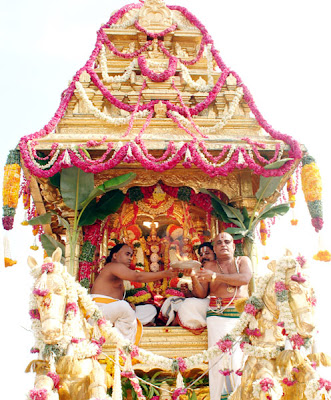
About Tirumala Tirupathi:-
Sri Venkateswara temple in Tirumala is located 860 metes above sea level atop a hill named Venkatadri. It is the last of the seven hills one has to traverse through from Tirupati, a transit point for Tirumala.
This temple’s importance in Indian religious milieu cannot be undermined. Some of the Vedic hymns aver that in Kali Yuga one can attain bliss (mukti) only by worshipping Sri Venkateswara or Lord Balaji, as he is also known. The evolution of this temple can be traced to Vaishnavite philosophy (a doctrine which maintains that by seeking forgiveness of God almighty people rid themselves of their sins and come close to salvation.)
It is a well documented fact now that people are traveling more than ever before because of better rail, road and air connectivity. This site is intended to give both native Indians and those living abroad an insight into the history. It will also provide useful tips to travelers apart from rare information. It wishes to be more than a mere travelogue. It is meant to encourage you to look back at our rich spiritual heritage.
Tirumala Guideline Map
Padi Kavali Maha Dwara:-
The Padi Kavali Maha Dwara or Outer Gopuram stands on a quadrangular base.
Its architecture is that of the later Chola period. The inscriptions on the gopuram belong to 13th century. There are a number of stucco figures of Vaishnava gods like Hanuman, Kevale Narasimha and Lakshmi Narasimha on the gopuram.
Krishna Deva Raya Mandapam:-
After passing through the Padi Kavali Maha Dvara, you will find yourself in an open mandapam called the Krishna Deva Raya Mandapam or Pratima Mandapam.
This mandapam gets its name from the pratimas or bronze portrait icons of the Vijayanagara emperor Krishnadevaraya and his two consorts, Tirumaladevi to his left, and Chinnadevi to his right. All three icons face the main shrine, with their hands joined in supplication.
In the southern wing of the Mandapam, is a statue of Venkatapathi Raya of the Aravidu dynasty, who ruled over Chandragiri around 1570 AD. To its side are stone statues of Achyutha Raya, who succeeded Krishna Deva Raya to the throne, and his wife Varadajiamma.
This Mandapam is believed to be built in later Vijayanagara times (early half of the 16th century). This Mandapam is full of exquisitely beautiful pictures of the Vijayanagara period like, Rama breaking the bow, Rama Pattabhishekam and Krishna Leela.
Sri Vaishnava symbols or the Urdhvapundras flanked by a conch and disc are carved at the top of the two main pillars of the Mandapam.






























